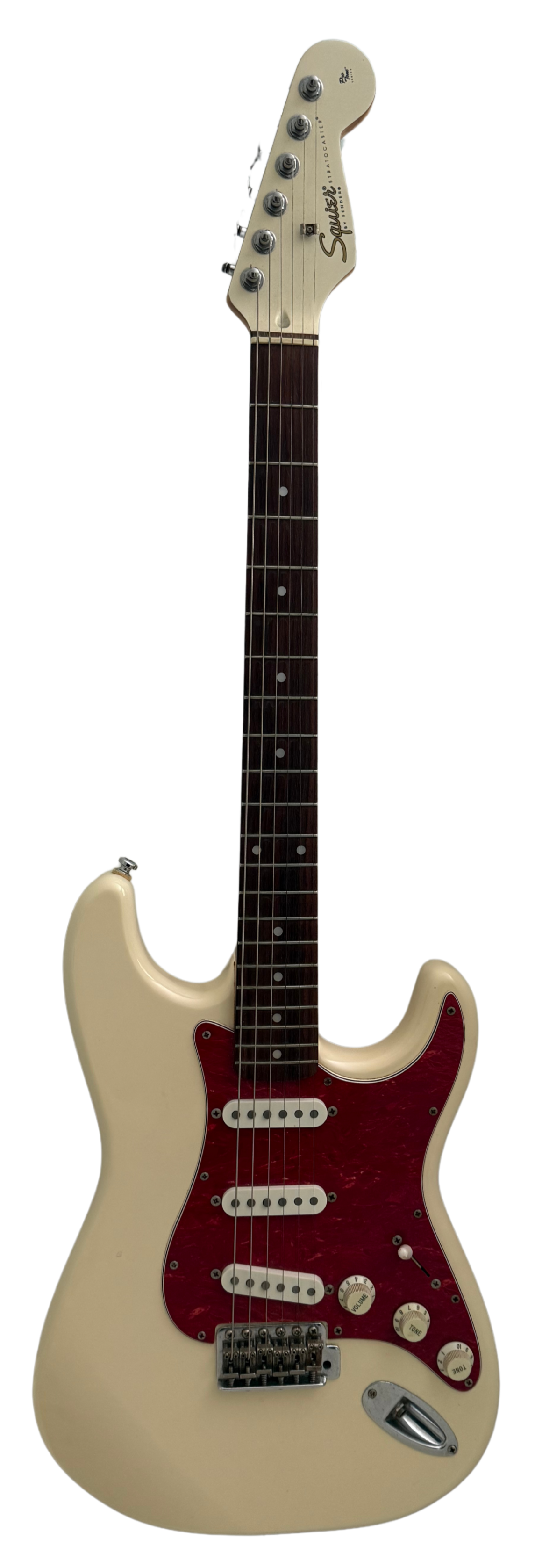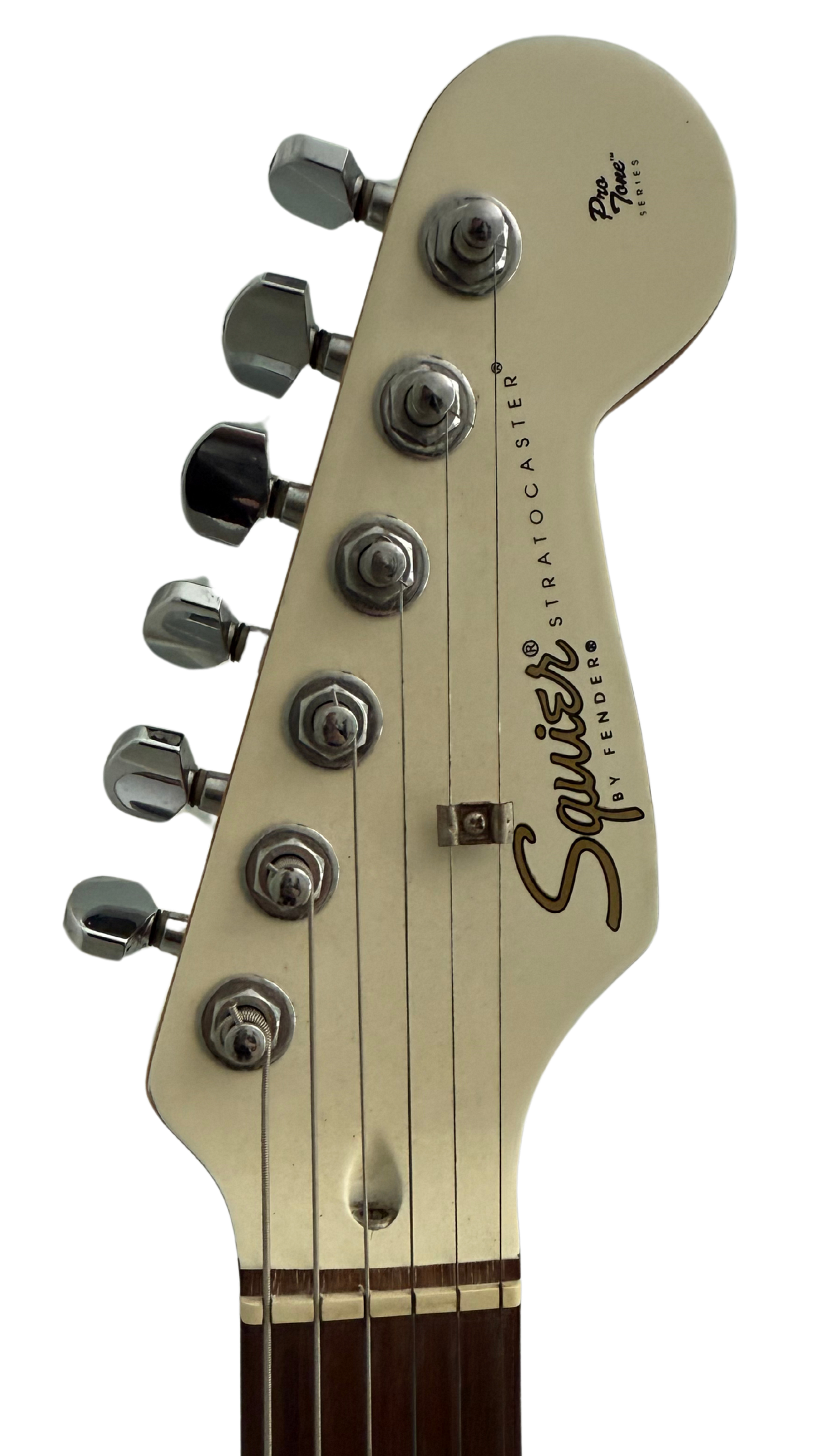The VC Squier Company was an independent musical instrument company that was started back in 1890 by Victor Carroll Squier. They started out making and repairing violins and eventually expanded into violin, banjo and guitar strings in the 1930’s. When Leo Fender released the Stratocaster in the 1950’s, Squier was a partner and Leo used their strings on all of the Fender electric guitars. In 1965 before Leo left Fender and sold the company to CBS, he acquired the Squier company. CBS continued to use their strings.
Toward the end of Fender’s CBS-era [1965-1985], the company was struggling with quality control issues and were losing the fight against lower cost copies of their guitars on the market. Primarily ones that were being manufactured in Asia. In 1981, Fender brought in new management to deal with these issues. The new executives noted that Fender had about 15% of the worldwide Fender-type market, and this was declining. The other 85% was being dominated by a variety of Fender copies and Fender-like products. The ability to seek legal action against these other brands proved to be a challenge. For example, in 1977 Gibson sued Ibanez for copying their headstock shape. The lawsuit was settled out of court while Ibanez continued to make similar shaped guitars. In order to try and regain market share, Fender decided to move production to Japan in 1982 and offer a cheaper priced guitar under the Fender banner.
Fender didn’t want to damage the image they established as a maker of premium American made instruments so they decided to market these new Japanese made instruments under the Squier brand name. In 1985 CBS sold Fender to an investment group and the Fender Musical Instruments Corporation was formed. In 1987 Squier production moved from Japan to Korea, and then eventually to China and Indonesia, where Fender’s budget guitars are still made to this day.
The Squier line had proved to be a success and really helped Fender compete with the eastern copy guitars. By the early 90’s Squier started to face increased competition again from various companies that were offering more features, better woods, and more finish options at the same price point as the Squier guitars. The now Korean made Squiers were turning out to be a failure due to their plywood bodies being the subject of negative marketing from their competitors. Squier was losing market share quickly and decided they wanted to improve the quality of the Squier brand. They were going to do this by introducing new deluxe Squier models to complement the cheaper standard Squier series.
The ProTone line was created and guitars were made from 1996 - 1998. These new deluxe models were designed at Fender HQ in Arizona and made at the Cort factory in Korea. Four guitar models were produced in the ProTone series. A vintage style stratocaster, fat stratocaster w/ humbucker in the bridge position and Floyd Rose style trem, a thin-line Telecaster and a Fat Telecaster with humbucker in the neck position. The guitars featured solid ash bodies, precision die-cast tuning machines and alinico-loaded single coil pickups. Finishes were also new and unique. The stratocasters were offered in vintage blonde, trans crimson red, trans sapphire blue, trans green, 3-tone sunburst and olympic white. The fat stratocaster was also offered in black. The transparent finish guitars came with gold hardware.
Fender stopped the line in 1999 largely due to their success. The ProTone guitars were extremely popular and were starting to compete with the range of Fender guitars being made in Mexico. In 1997 the Fender standard Mexican made Stratocaster was slightly less expensive than the ProTone Stratocaster. Fender was investing heavily in their Ensenada factory and couldn’t afford to cannibalize that effort so they pulled the plug.
The first ProTone series guitar that I played was the thinline Telecaster. My friend had bought one in the early 2000’s and I couldn’t get over how well it played. I hadn’t heard of them before and there was very little information online at that time.
Shortly after, I found this used ProTone Stratocaster for sale on craigslist.
This is the vintage style version in Olympic white with matching painted headstock, red tortoise shell pickguard and dark rosewood fretboard. The solid ash body is very light and balanced. The neck has a modern C profile with a 9.5” radius and vintage tall frets. The neck has a relatively flat, thin profile and is fast playing. I love the frets that they used on these compared to modern Squier Strats with their jumbo steel frets. The feeling is more vintage and very comfortable.
They also used the same vintage style tremolo bridge that they used for vintage spec. American made guitars at the time. The tuners are vintage style and work great.
The stock pickups sound just fine for a Squier guitar. They are lower impedance, vintage style. They don’t sound thin and brittle like some of the newer Squier Strats. I still decided to upgrade the pickups to Lindy Frailin blues specials which have made this guitar one of my favorites. At the time that I’m writing this, you can still find them for about the same price as a new Squier Stratocaster and I think this is a much better guitar for the money. The transparent finish choices on some of the ProTone’s are a bit dated and not my personal preference, but if you’re in the market for a white, black or sunburst model Stratocaster and can find one of these on the used market, they are great buys!






